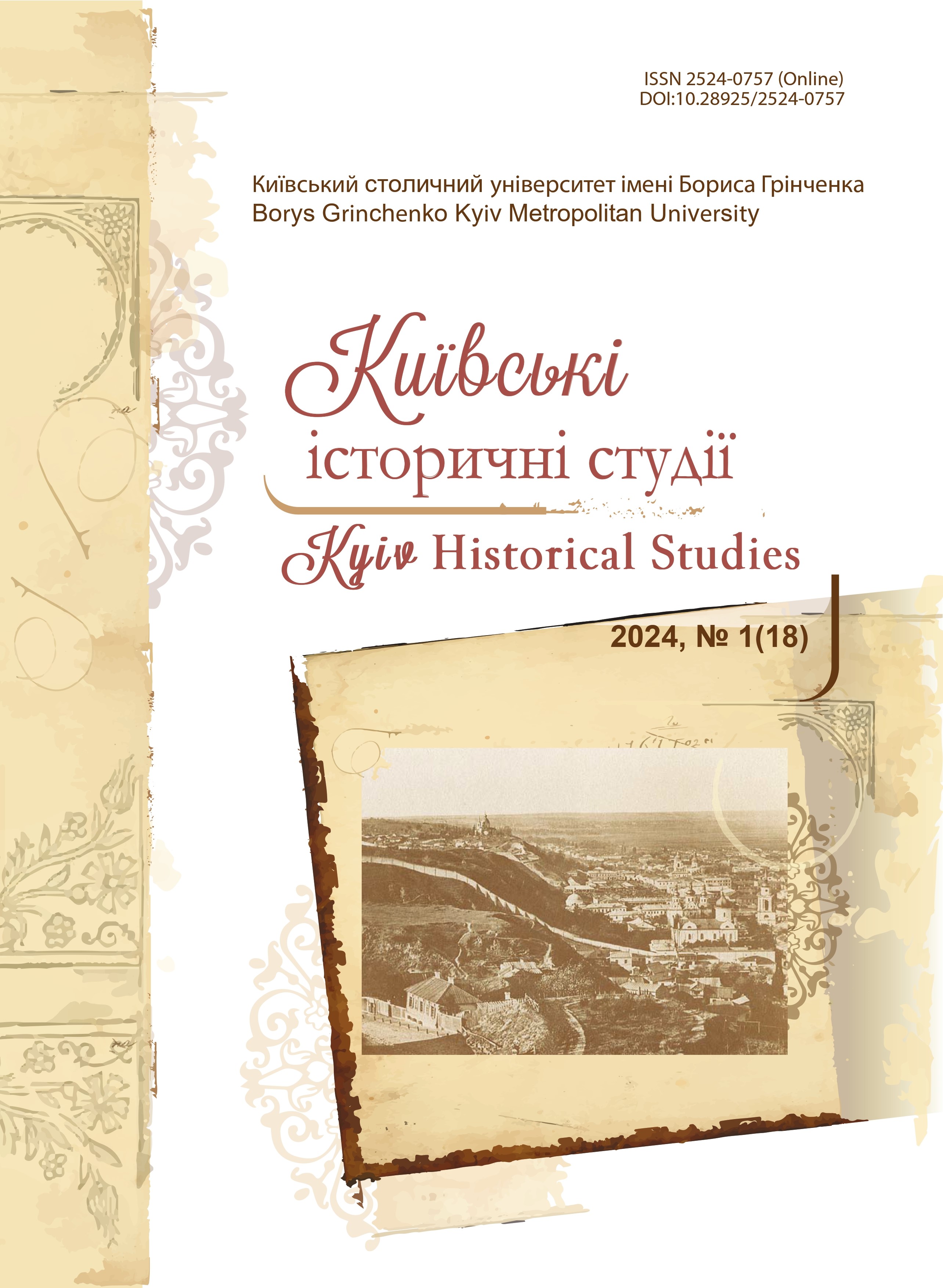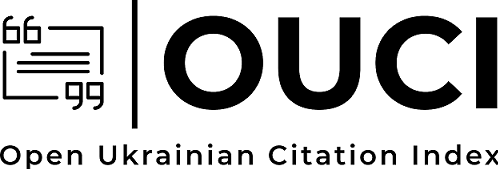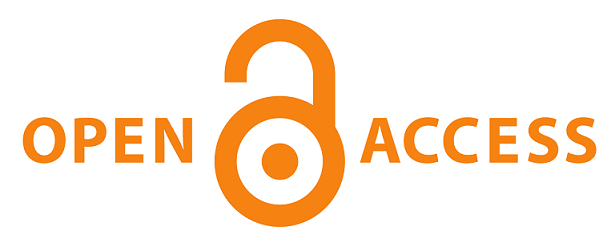Freedom of Religion and the State-Canonical Status of the Orthodox Church during the Period of the Ukrainian State of Hetman Pavlo Skoropadskyi
DOI:
https://doi.org/10.28925/2524-0757.2024.14Keywords:
the Ukrainian State, Hetman Pavlo Skoropadskyi, freedom of religion, interaction of authorities with religionsAbstract
The article analyses the state of affairs with the implementation of freedom of religion in the Ukrainian State of Hetman Pavlo Skoropadskyi in the context of the religious structure of the population. On the basis of the legal acts of the Ukrainian State, in particular, of a constitutional nature, and the directions of the Ministry of Confessions, it was established that the interests of religious minorities in the state were adequately provided for and met their basic needs for functioning, if their activities were not of a political nature. In particular, this is demonstrated by the example of large Christian non-Orthodox denominations (Catholicism, Greek Catholicism, evangelical denominations). It has been proven that Orthodoxy, professed by the majority of Ukrainians, was the state religion, which was reflected both in legislation and in the strategic cooperation of the Hetman government with the Church. It is emphasized that Hetman Pavlo Skoropadskyi played a decisive role in the position of interaction with the Orthodox Church and its development within the framework of the national cultural policy of the Ukrainian State, which was helped by the image of Hetman as a classical monarch from the point of view of the Orthodox clergy. It was noted that the priority issue for the authorities and Orthodox hierarchs was the canonical status of the Orthodox Church in Ukraine, which, to the satisfaction of both, established itself in autonomy, but could not rise to autocephaly due to the geopolitical situation and the general mood of Ukrainian believers. Hence, the establishment of the autonomous status of the Orthodox Church in Ukraine became a logical consequence of the activity of the All-Ukrainian Church Council, which acted in accordance with the canons, and therefore such a status of the Church could not be questioned.
Downloads
References
Chornyi, S. (2001). Natsionalnyi sklad naselennia Ukrainy v XX storichchi [The National Composition of the Population of Ukraine in the 20th century]. Kyiv: DNVP «Kartohrafiia» [in Ukrainian].
Chuiko, K (2022). Relihiina polityka natsionalnykh uriadiv 1917–1921 rokiv: suchasna ukrainska istoriohrafiia [Religious Policy of National Governments in 1917–1921: Modern Ukrainian historiography]. Litopys Volyni, 27, 124–128 [in Ukrainian]. https://doi.org/10.32782/2305-9389/2022.27.20
Ihnatusha, O. (2006). Zminy kanonichnoho statusu Pravoslavnoi Tserkvy v Ukraini (1918–1930-ti rr.): vid avtonomii do ekzarkhatu [The Changes in the Canonical Status of the Orthodox Church in Ukraine (1918–1930): From autonomy to exarchate]. Naukovi pratsi istorychnoho fakultetu Zaporizkoho derzhavnoho universytetu, 20, 198–207 [in Ukrainian].
Ihnatusha, O. (2018). Tserkva v Ukrainskii revoliutsii 1917–1921 rr. yak predmet suchasnykh istorychnykh doslidzhen: pidsumky dvadtsiatylitnoho dosvidu vyvchennia problem [The Church inside Ukrainian Revolution of 1917–1921 as a Subject of Modern Historical Research: The Summary of Twenty Year Long Experience of the Problem Investigation]. Naukovi pratsi istorychnoho fakultetu Zaporizkoho natsionalnoho universytetu, 50, 84–112 [in Ukrainian]. https://doi.org/10.26661/swfh-2018-50-005
Kyrydon, A. (2013). Relihiino-tserkovne zhyttia v period Hetmanatu: problemne pole vzaiemodii [Religious and Church Life during the Hetmanate Period: A problematic field of interaction]. Natsionalna ta istorychna pamiat, 7, 252–259 [in Ukrainian].
Kravchuk, M., & Romaniv, A. (2022). Derzhavne budivnytstvo ta derzhavno-pravovi idei Pavla Skoropadskoho [State Building and State and Legal Ideas of Pavlo Skoropadsky]. Aktualni problemy pravoznavstva, 3 (31), 6–15 [in Ukrainian]. https://doi.org/ DOI:10.35774/app2022.03.006
Skoropadskyi, P. (2017). Spogady: kinets 1917 — hruden 1918 [Memoirs: the end of 1917 — December 1918]. (E. Solovei, Trans). I Huruch (Ed.). Kyiv: Nash Format [in Ukrainian].
Telukha, S. (2012). Mytropolyt Antonii (Khrapovytskyi) — adept monarkhichnoho sposobu pravlinnia derzhavoiu [Metropolitan Anthony (Khrapovytskyi) — an adept of the monarchical way of ruling the state]. Aktualni problemy istorii Ukrainy, 65 (971), 81–86 [in Ukrainian].
Pyrih, R. (Ed.). (2015). Ukrainska Derzhava (kviten — hruden 1918 roku). Dokumenty i materialy [The Ukrainian State (April — December 1918). Documents and materials]. Vol. 1, Kyiv: Tempora [in Ukrainian].
Ulianovskyi, V. (1997). Tserkva v Ukrainskii Derzhavi 1917–1920 rr. (doba Hetmanatu Pavla Skoropadskoho) [The Church in the Ukrainian State 1917–1920 (the time of the Hetmanate of Pavlo Skoropadskyi)]. Kyiv: Lybid [in Ukrainian].
Published
How to Cite
Issue
Section
License
Copyright (c) 2024 Володимир Місько, Арсен Романів

This work is licensed under a Creative Commons Attribution-NonCommercial-ShareAlike 4.0 International License.
Authors who publish in this journal retain the right of authorship of the work and give to the journal right of first publication of this work under the conditions of Creative Commons: Attribution-NonCommercial-ShareAlike 4.0 International (CC BY-NC-SA 4.0), which allows others freely distribute the work published with reference to the authors of the original work and the first publication of this magazine.














